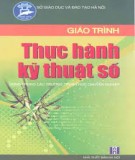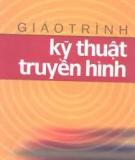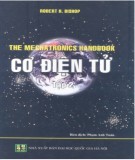Tài liệu Thư viện số
- Kỹ thuật cơ khí (1147 )
- Kỹ thuật xây dựng (1156 )
- Điện - Điện tử - Viễn thông (1377 )
- Công nghệ thông tin (1126 )
- CN Thực phẩm & Sinh học (1194 )
- Quản lý công nghiệp (711 )
- Khoa học cơ bản (1160 )
- Tài liệu tham khảo khác (584 )
Danh mục TaiLieu.VN
- Mẫu Slide Powerpoint
- Luận Văn - Báo Cáo (344720)
- Kinh Doanh Marketing (65512)
- Kinh Tế - Quản Lý (48934)
- Tài Chính - Ngân Hàng (55898)
- Công Nghệ Thông Tin (142209)
- Tiếng Anh - Ngoại Ngữ (47066)
- Kỹ Thuật - Công Nghệ (134345)
- Khoa Học Tự Nhiên (107174)
- Khoa Học Xã Hội (82451)
- Văn Hoá - Nghệ Thuật (54408)
- Y Tế - Sức Khoẻ (173915)
- Nông - Lâm - Ngư (62504)
- Kỹ Năng Mềm (29016)
- Biểu Mẫu - Văn Bản (27610)
- Giải Trí - Thư Giãn (51994)
- Văn Bản Luật (198854)
- Tài Liệu Phổ Thông (402015)
- Trắc Nghiệm Online (213578)
- Trắc Nghiệm MBTI
- Trắc Nghiệm Holland
Tài liệu nổi bật
Kết quả 109-120 trong khoảng 1377
-
Lecture Automatic control systems technology - Lesson 16: Basic control modes
Lecture Automatic control systems technology - Lesson 16: Basic control modes. After this presentation you will be able to: describe the common control modes used in analog control systems; list the characteristics of common control modes; write the time, Laplace and transfer functions of common control modes;... Please refer to the content of document.
30 p ctuet 27/12/2023 10 0
-
Lecture Automatic control systems technology - Lesson 21: Methods of system analysis
Lecture Automatic control systems technology - Lesson 21: Methods of system analysis. After this presentation you will be able to: compute the value of transfer function for given frequencies; compute the open loop response of a control system; compute and interpret the closed loop response of a control system; compute and interpret the error ratio of a control system;... Please refer to the content of document.
29 p ctuet 27/12/2023 16 0
-
Lecture Automatic control systems technology - Lesson 9: Proportional control action
Lecture Automatic control systems technology - Lesson 9: Proportional control action. After this presentation you will be able to: identify the components of a proportional feedback control system; write a mathematical model for a proportional controller; compute the proportional bandwidth of a proportional controller;... Please refer to the content of document.
22 p ctuet 27/12/2023 13 0
-
Lecture Automatic control systems technology - Lesson 7: Thermal and mechanical element math models in control systems. After this presentation you will be able to: explain how heat flows from conduction and convection in a thermal system; compute thermal resistance and determine heat flow; determine thermal capacitance; determine the mechanical resistance, capacitance and dead-time delay in a mechanical system;... Please refer to the content...
24 p ctuet 27/12/2023 12 0
-
Lecture Automatic control systems technology - Lesson 6: Mathematical models of fluid flow components. After this presentation you will be able to: define the characteristics of a fluid flow system; identify if a fluid flow is Laminar or Turbulent based on fluid and system parameters; write mathematical models for fluid characteristics;... Please refer to the content of document.
22 p ctuet 27/12/2023 11 0
-
Lecture Automatic control systems technology - Lesson 10: The laplace transform
Lecture Automatic control systems technology - Lesson 10: The laplace transform. After this presentation you will be able to: explain how the Laplace transform relates to the transient and sinusoidal responses of a system; convert time functions into the Laplace domain; use Laplace transforms to convert differential equations into algebraic equations; take the Inverse Laplace transform and find the time response of a system;... Please refer to...
19 p ctuet 27/12/2023 12 0
-
Lecture Automatic control systems technology - Lesson 8: Modeling physical systems with linear differential equations. After this presentation you will be able to: explain what a differential equation is and how it can represent dynamics in physical systems; identify linear and non-linear differential equations; identify homogeneous and non-homogenous differential equations;... Please refer to the content of document.
34 p ctuet 27/12/2023 11 0
-
Lecture Automatic control systems technology - Lesson 11: Solving mechanical system dynamics using laplace transforms. After this presentation you will be able to: draw a free body diagram of a translational mechanical system; write a differential equation that describes the position of a mechanical system as it varies in time; use Laplace transforms to convert differential equations into algebraic equations;... Please refer to the content of...
14 p ctuet 27/12/2023 8 0
-
Lecture Automatic control systems technology - Lesson 1: Introduction to control systems technology
Lecture Automatic control systems technology - Lesson 1: Introduction to control systems technology. After this presentation you will be able to: explain the function of an automatic control system; identify a block diagram representation of a physical system; explain the difference between an open loop and closed loop control system;... Please refer to the content of document.
28 p ctuet 27/12/2023 9 0
-
Lecture Automatic control systems technology - Lesson 3: Operational amplifier circuits in analog control. After this presentation you will be able to: list the characteristics of an ideal Operational Amplifier (OP AMP) circuit; identify and utilize fundamental OP AMP circuits to amplify and signals; use OP AMP circuits to reduce inter-stage loading effects in sensor circuits;... Please refer to the content of document.
27 p ctuet 27/12/2023 10 0
-
Lecture Automatic control systems technology - Lesson 4: Scaling linear sensors and transducers
Lecture Automatic control systems technology - Lesson 4: Scaling linear sensors and transducers. After this presentation you will be able to: develop mathematical relationships for a sensor that has a linear output; convert linear mathematical equations into block diagrams that represent sensor scaling circuits; adjust the output range of a sensor using operational amplifier circuits;... Please refer to the content of document.
24 p ctuet 27/12/2023 9 0
-
Lecture Automatic control systems technology - Lesson 5: Mathematical models of electrical control system components. After this presentation you will be able to: identify types of subsystems found in control systems; list the characteristics of electrical subsystems; write mathematical models for electrical characteristics; solve for steady-state electrical quantities using given mathematical modeling equations;... Please refer to the content...
15 p ctuet 27/12/2023 12 0
Đăng nhập
Bộ sưu tập nổi bật























